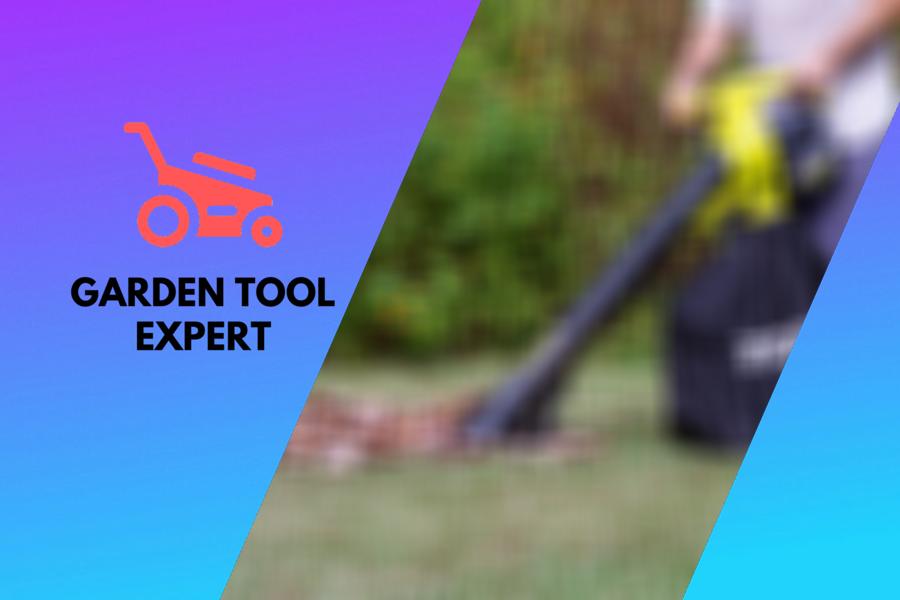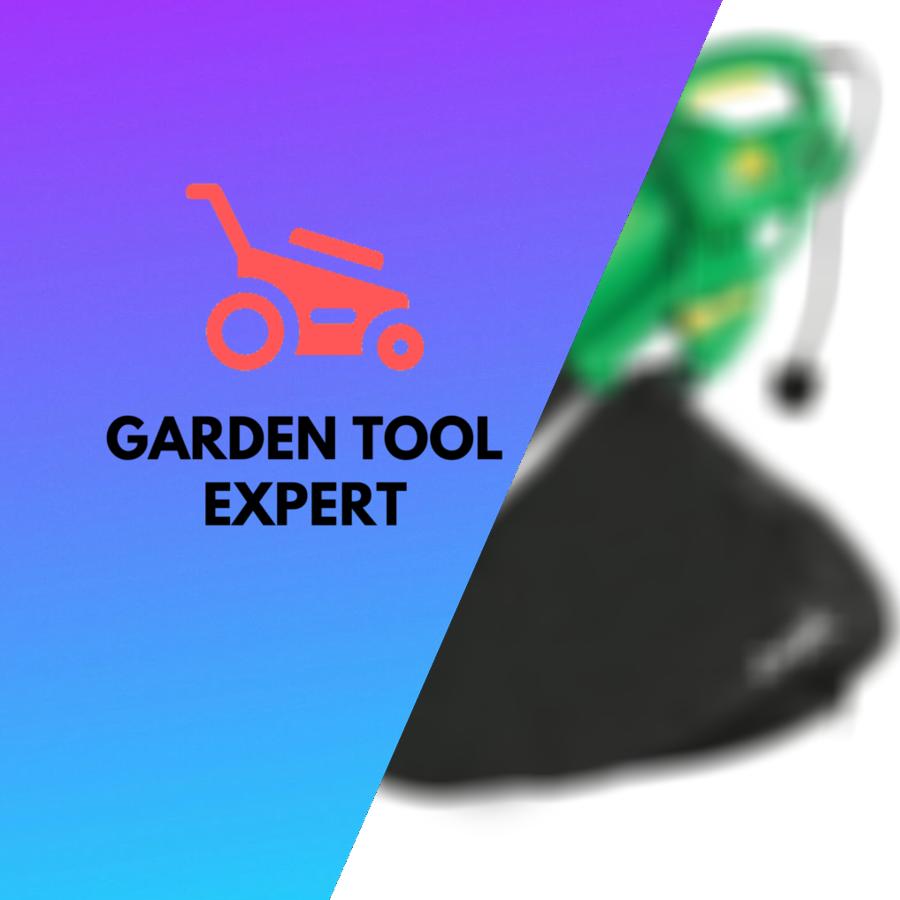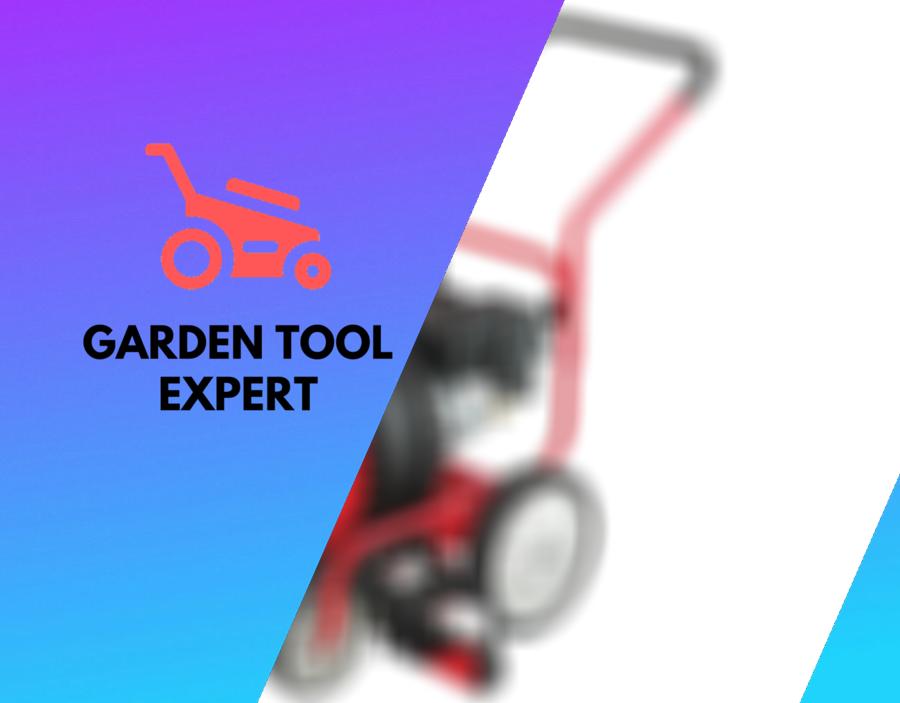Torn between choosing a leaf blower or a vacuum for your garden? Our expert comparison will highlight the key differences, helping you make an informed decision that aligns with your needs and preferences.
Leaf Blowers vs. Vacuum: What’s Best For You?
Both machines are powerful and can be used in different situations. A vacuum can be the best option if you aim to remove the leaves from your garden, which is not that large. A leaf blower would be a better solution for large areas or locations where you can dump the leaves on the side. In general, we would recommend most home users a leaf vacuum or, even better, a machine that can do both.

If you are a homesteader looking for the best answer to the best between a blower and a vacuum, this post walks you through everything you need to know. From comparing the features of the two gadgets to making the final decision, dive in as we explore everything bit by bit.
Contents
- 1 When Should You Use A Leaf Blower?
- 2 When Should You Use A Leaf Vacuum?
- 3 Comparing the Advantages of Leaf
Blowers vs. Advantages of Leaf Vacuums
- 3.1 ● Pros of a Leaf Blower
- 3.2 ● Pros of a Leaf Vacuum
- 3.3 ● Cons of a Leaf Blower
- 3.3.1 – Leaves May Flow Back To the Yard
- 3.3.2 – Quite Costly
- 3.3.3 – Quite Noisy
- 3.3.4 Over the years, I’ve learned that the size and layout of a garden can significantly influence whether a leaf blower or vacuum is more suitable. More extensive, open gardens benefit from the efficiency of a leaf blower.
- 3.3.5 – Maintaining Leaf Blowers Is Costly
- 3.3.6 – Not recommended for People With Respiratory Problems/Allergies.
- 3.3.7 – Do you Need a Rake after Using a Leaf Blower?
- 3.3.8 – Quite heavy
- 3.4 ● Cons of a Leaf Vacuum
When Should You Use A Leaf Blower?
A backpack leaf blower is powerful, albeit not the perfect choice if you need something to clean your backyard with great precision. The following are, therefore, situations under which a blower is the best bet:
● Ideal for Quick Cleaning Tasks
If you have been keen enough, you must have noticed that landscaping professionals always walk around with leaf blowers. It is a famous sighting, especially during autumn, because leaves fall from trees in their millions.
Cleaning backyards and lawns is always easy with a leaf blower. You will not realize with vacuum leaf blowers because you must walk slowly for the best cleaning results.
Also, since leaf blowers expel air jets through their nozzles at high speed and precision, they are undoubtedly ideal for clearing leaves quickly. Speed is essential when working on extensive grounds.
● Useful When Cleaning Wet Debris
You would not want to risk using a vacuum to clean wet leaves in your backyard lest they get blocked. While vacuums can pick up dense debris and leaves, a leaf blower is ideal. They eject air forcefully through their nozzles, enough to clear dump debris, freshly cut grass, and wet leaves on your yard/lawns.
● More Useful When You Have Other Cleaning Equipment: The Blower Vacuum Combination
While you can use a leaf blower independently, homesteaders who have shared their experiences with these gadgets speak otherwise. They say a blower is most effective alongside other equipment, such as a rake. You will also realize more precision when cleaning your yard using a blower and a leaf vacuum.
In my two decades of gardening, I’ve found that leaf blowers and vacuums serve different purposes. Leaf blowers are great for gathering leaves, while vacuums excel at collecting them.
● Ideal for Cleaning Wide Spaces
Another reason to choose a blower instead of a leaf vacuum is to better clear leaves in open and wide spaces. You will, however, not realize a perfect cleaning outcome clearing leaves off narrow gutters of your home using a blower. Instead, a vacuum always does the best job.
But if you are okay with leaving a little mess behind, you can use blowers in narrow alleys. Some open spaces where a blower fits the bill, as the ideal cleaning gadget is inside boats /cars/tracks, workshops, and garages.
Typically, leaf blowers send leaves off your yard onto a wall or into a corner where they can be easily collected. They are usually more effective with other tools like rakes or grills. It’s important to note that not all leaf blowers are created equal.
Some brands, like Echo, have been tested and proven more effective than others. So, before you buy, research and read up on some tips to ensure you get the best leaf blower for your needs.
When Should You Use A Leaf Vacuum?
Leaf vacuums are uniquely different from blowers. They have a collection bag into which debris gets sucked. With the best vacuums in the market, you will not bend when picking leaves from piles in your backyard.
These gadgets have a suction power that transcends the tedious process of manually picking leaves.
Whether you buy a walk-in front/pull or posh/tow-behind blower, yard vacuums are handy equipment that turns cleaning routines into a breeze. With the best models, you can even suck up used cans and waste wrappers with great ease and convenience.
When we researched the circumstances under which vacuums are the best cleaning gadgets, we discovered the following:
Beyond leaf collection, leaf blowers, and vacuums have other lesser-known benefits. They can clear light snow, dry off your car, or clean out your gutters.
● Ideal for Cleaning Leaves/Debris in Narrow Spaces
You wouldn’t have to worry about cleaning narrow spaces with a leaf vacuum. They are ideal for tasks that involve squeezing through little gutters, trenches, and alleys.
While you should expect a few leaves to fly off during a cleaning routine, a leaf vacuum works perfectly between plants, such as in a flower garden. Their nozzles are very effective when picking up leaves, although some may scatter too far.
● Vacuums Are Suitable For Delicate Cleaning Tasks
In this context, think about using a leaf blower to clear dead leaves from driveways and your flower garden. You will realize it is not the right thing to do. Leaf blowers release strong air jets through their nozzles, which may damage your flowers.
However, with a leaf vacuum, you should confidently work in your flower garden without the risk of damaging flower petals or weak plant stems. Whether you use a push, pull, or handheld vacuum, it is easier to control these gadgets when handling delicate cleaning tasks than leaf blowers.
● Good for Removing Pests
When pests invade your crops or flowers, worrying is an understatement. It is especially true if you have worked hard to create a beautiful flower garden. But did you know that a leaf vacuum can do a perfect cleaning job instead of risking the dangers of using pesticides and insecticides?
In the same way that vacuums devour leaves and debris in your backyard, they would significantly decimate the pest population in your flower garden and backyard. Thus, if you decide to go this route, professionals recommend using vacuums with wide nozzles to avoid damaging plants.

● Lawn Vacuums Shred Debris to Form Mulch
Lawn vacs make for perfect alternatives to mulching lawnmowers. The catch is that inside most vacuums, there is an impeller. While it circulates air inside the gadget to create suction power, fans of an impeller inside these gadgets are sharp enough to shred debris into tiny pieces.
Compared to a leaf blower, you realize that by shredding leaves to mulch, vacuums speed up the decomposition of debris collected from your lawn.
Vacuums, therefore, simplify the process of making mulch, which is an excellent advantage over blowers. To homesteaders who practice composting, these gadgets are handier than blowers.
● They Present Users with Great Convenience
The fact that lawn vacuums have a collection bag makes them a top choice among homesteaders who love convenience regarding homesteading routines like cleaning lawns. Everything they suck up goes into a collection bag as tiny pieces of mulch for easy disposal.
Comparing the Advantages of Leaf Blowers vs. Advantages of Leaf Vacuums
Apart from comparing these gadgets based on their uses, let’s also look at their pros and cons. This information is essential because, in the end, you will choose one based on the circumstances under which they are helpful and their merits and demerits.
● Pros of a Leaf Blower
This yard cleaning gadget comes with advantages such as the following:
– Time-Saving
The main disadvantage of cleaning yards manually is spending hours picking leaves. And even if you use a rake, you waste a lot of time. However, with a good leaf blower vacuum, you will finish cleaning your yard within the shortest time possible.
Regardless of how nasty the mess is, you only need to turn on the machine and blow leaves to a desired location/collection point. This can be a real project saver for your house.
– Easy To Use
Another advantage of leaf blowers is their ease of use. Once you have this gadget, you will clean your lawn quickly and do it efficiently. These gadgets are among the easiest to use among the many available homesteading tools. The vacuum function in these blowers can help remove stains from your decking.
– Leaf Blowers Come In Variety
Another merit of leaf blowers is that homesteaders can choose from many options. However, it will always depend on your taste and preference. We will walk you through the types of blowers later on in this post.

– Some Are Highly Accessorised
It is also noteworthy that leaf blowers come with additional accessories. But while you can find one that also mulch leaves, it is not a common feature in these gadgets. Some models even come with ovens for burning leaves.
– Suited To Different Uses
While most people think blowers are only meant for leaves, they have other uses. You can use these gadgets to blow grass clippings after mowing your lawn. Even more surprising is that a blower helps remove snow from your lawn and driveway in winter thanks to its blowing power.
However, you should know that blowing thick snow would be a little tricky. The weight makes it difficult for the blow to do a clean job. The weight makes it difficult for the blow to do a neat job. But don’t lose hope, as blower vacuums work best with dry leaves.
– Saves you from backache
Raking leaves or picking them manually is often a recipe for backache. It is because you end up spending many hours bending. However, with a leaf blower, there is minimum or no bending. Once you power on your machine, every leaf in your yard gets blown away to the desired collection point for disposal.
So, do you need to take care of your back? Try vacs! They might pass your ratio of effort to results tests.
● Pros of a Leaf Vacuum
Given that this post compares two of the most versatile tools for cleaning lawns let’s now look at the advantages of a leaf vacuum. They include:
– Produces Mulch
A yard butler will leave a lot of mess on your lawn, but with a leaf vacuum, rest assured of turning the collected chaos into helpful mulch for your flower garden. A void, therefore, comes in handy during autumn or summer when cleaning your compound and is also a valuable gadget for making mulch.
– Effective Lawn Cleaning Tool
A leaf vacuum has a collection bag, making your work as effective as possible. Thus, a vacuum is enough to collect dead leaves instead of using many bags. It contains leaves and then shreds them into tiny pieces (mulch).
– Powerful and Strong
It would be best not to worry about damaging the gadget when using a vacuum to clean your yard. It is one of the most robust homesteading tools in the market. They can pick up sticks and debris without the risk of damage.
It also means you will not spend a lot of money on the maintenance of these tools. Moreover, they are powerful because most leaf vacuums use electricity (battery) as their energy source.
● Cons of a Leaf Blower
While leaf blowers come with lots of advantages and, most importantly, an upgrade from using rakes, there are a few notable disadvantages every homesteader should know. They include:
– Leaves May Flow Back To the Yard
The main disadvantage of using leaf blowers is that leaves may fly back to your yard. This is especially true if you don’t collect and dispose of them appropriately.
Thus, when shopping for a blower, remember that most, if not all, do not have a collection bag. However, with a leaf vacuum, every leaf goes into a collection bag and becomes shredded mulch.
– Quite Costly
Another demerit is that leaf blowers are not cheap. Compared to rakes, you will spend a few more bucks to acquire a good model—the cheapest blower costs around $30, with most going for hundreds of dollars.
– Quite Noisy
While the noise level varies depending on whether you have a gasoline-powered or electric blower, these gadgets are generally noisy. Gas-powered variants are the loudest and can be a nuisance to your neighbors.
Over the years, I’ve learned that the size and layout of a garden can significantly influence whether a leaf blower or vacuum is more suitable. More extensive, open gardens benefit from the efficiency of a leaf blower.
– Maintaining Leaf Blowers Is Costly
If you upgrade from a rake to a leaf blower, get ready to spend a few more bucks on maintenance costs. It is the only way of ensuring the optimal performance of these gadgets. From occasionally replacing spark plugs to cleaning filters, you will spend money beyond the purchase.
– Not recommended for People With Respiratory Problems/Allergies.
People who suffer from respiratory problems should not use leaf blowers, at least if they can avoid it. When using these gadgets, they also blow dirt and dust, which is often unpleasant. Therefore, people with allergic conditions, such as asthma, should avoid using these gadgets.
– Do you Need a Rake after Using a Leaf Blower?
Blowing litters of leaves on your yard is one thing, but ensuring they are collected at one point is another. However, forgetting to collect the mess neatly with a leaf blower would be best. In the end, raking leaves will ensure they are neatly placed in one corner of your yard for easy disposal.
– Quite heavy
While this post is not about rakes, it is noteworthy that a leaf blower comes with extra baggage. They weigh more than rakes, something homesteaders may find inconveniencing.
● Cons of a Leaf Vacuum
When it comes to leaf vacuums, they too come with some demerits, such as the following:
– Quite Noisy
Like leaf blowers, vacuums are also noisy and can nuisance to your neighborhood.
– Produce a Lot of Dust
While vacuums suck up leaves in your yard with great ease, the second stage of turning them into mulch produces dust. Thus, it would be best to always use a mask as a precaution against inhaling dust.


Is it recommended to wear protective gear when using leaf blowers?
It is recommended to wear protective gear when using leaf blowers to protect your eyes, ears, and respiratory system. Safety goggles, earplugs, and a mask can help prevent injuries and exposure to harmful substances.
Can leaf vacuums handle wet leaves or debris?
Leaf vacuums are not recommended for wet leaves or debris. It’s best to use a leaf blower for that task. Be sure to check out our detailed comparison for more information!
I had no idea leaf vacuums could help with pest control, fascinating!
Thanks, Lester! Leaf vacuums are indeed a versatile tool for pest control. We’re glad you found our post helpful. Let us know if you have any more questions!
What are the safety precautions one should take when using a leaf blower?
When using a leaf blower, always wear ear protection, eye goggles, gloves, and closed-toe shoes to protect yourself from loud noise and debris. Stay safe!
Are leaf blowers battery-powered or do they require gas?
Most leaf blowers are powered by gas, but there are battery-powered options available that are better for the environment. Choose what works best for you!
I didn’t know leaf vacuums could be used for making mulch, very useful information.
Thank you, Ronnie! We’re glad you found the information useful. Leaf vacuums can be a great tool for creating mulch and keeping your garden tidy. Enjoy using yours for a cleaner yard!
This article is so helpful in explaining the differences between leaf blowers and vacuums! I feel more confident in making the right choice for my garden now. Thank you!
“Thank you for your positive feedback, Louella! We’re glad you found the article helpful in making your decision. Happy gardening!”
I’m surprised at the versatility of leaf blowers, from snow removal to grass clippings!
Thank you, Carla. Leaf blowers are truly versatile tools for outdoor cleaning! Your insights are valuable.
I never knew leaf blowers could be used for snow removal, interesting!
Thank you, Emma! Leaf blowers are versatile tools, and using them for snow removal is just one of the many benefits they offer. Check out our comparison for more insights.
I never knew that leaf vacuums could be used for shredding debris into mulch, very cool!
Thank you, Yvonne! Leaf vacuums are a versatile tool that can make your lawn maintenance easier. I’m glad you found the information helpful.
I never considered using a leaf blower for cleaning gutters, good to know!
Thanks, Anthony! Yes, leaf blowers can be quite versatile for various tasks in the garden. Happy cleaning!
What is the average cost of a leaf blower?
Hi Carlos! The average cost of a leaf blower can vary depending on the model and brand. You can find some starting as low as $30, but higher-end models can go for hundreds of dollars. Hope this helps!
Can leaf vacuums be used for cleaning flower beds?
Leaf vacuums can indeed be used for cleaning flower beds. The suction power of a vacuum is ideal for delicate cleaning tasks in narrow spaces, like flower gardens, without damaging plants.
Great comparison between leaf blowers and vacuums!
Thanks, Don! Glad you enjoyed the comparison between leaf blowers and vacuums. Hope it helped you make an informed decision for your garden needs!
How do leaf blowers compare in terms of noise level?
Leaf blowers tend to be noisier compared to leaf vacuums, making leaf vacuums a better option if noise level is a concern for you.
What maintenance is required for leaf vacuums?
Maintenance for leaf vacuums typically involves regular cleaning of the collection bag, checking and replacing the mulching blades as needed, and ensuring that the motor and battery are in good condition.
What brands would you recommend for leaf blowers?
For leaf blowers, I would recommend brands like Echo for their effectiveness in clearing leaves from your yard. They are tested and proven to be more effective than others.
I appreciate the tips on when to use a blower versus a vacuum, very helpful.
Thank you, Esther! I’m glad you found the comparison helpful. Let me know if you have any more questions!
How long does the battery of a leaf blower last?
The battery life of a leaf blower typically lasts between 20-60 minutes, depending on the brand and model. It’s best to check the specific details of the leaf blower you are considering.
This article has been so informative, thank you for the insights!
Thank you for your kind words, Anthony! I’m glad you found the article informative. If you have any more questions or need further insights, feel free to reach out.
The comparison of pros and cons between blowers and vacuums is very insightful.
Thank you, Mark Kelly! I’m glad you found the comparison insightful. Let me know if you have any more questions or need further information on leaf blowers and vacuums.